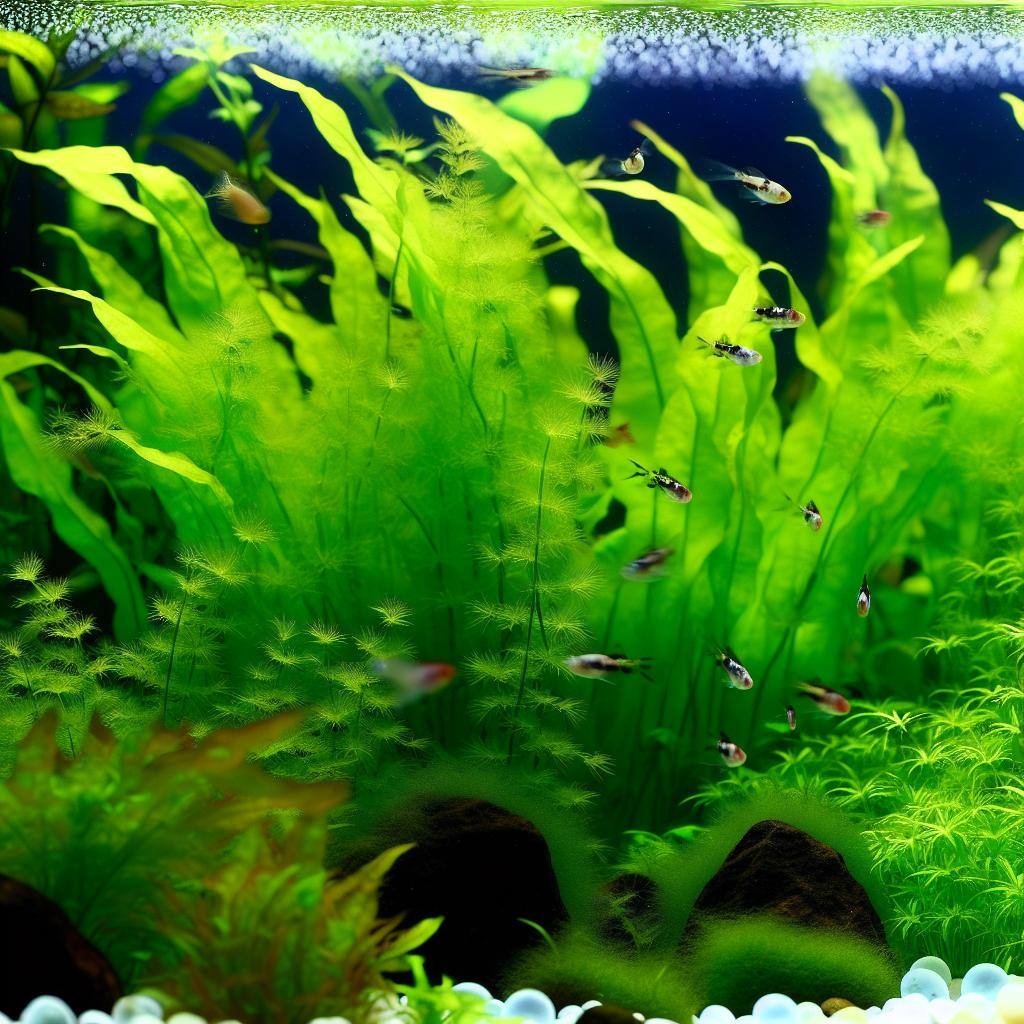
Unlock the full potential of Ceratophyllum demersum in your aquarium with expert care tips.
Exploring the Natural Habitat of Hornwort
Hornwort, or Ceratophyllum demersum, is a plant native to many parts of the world and is commonly found in freshwater environments such as lakes, ponds, and slow-moving streams. It thrives in a wide range of temperatures and conditions, which makes it extremely adaptable. Understanding its natural habitat helps aquarists recreate the best conditions for hornwort in captivity. In the wild, hornwort uses its feathery, dense foliage to provide shelter for fish and to compete with algae for nutrients.
The adaptability of hornwort also means it can survive in various light conditions, from partial shade to full sunlight. Its rootless nature allows it to float freely or anchor itself in the substrate with its lower leaves. By mimicking these conditions in an aquarium, enthusiasts can ensure their hornwort remains healthy and vibrant, offering a natural and beneficial addition to their aquatic ecosystems.
Optimizing Tank Conditions for Thriving Hornwort
Achieving the ideal tank conditions is crucial for hornwort to flourish. The plant prefers water temperatures between 15°C and 30°C (59°F to 86°F) and a pH range from 6.0 to 7.5. While hornwort can survive in low light, moderate to high lighting will promote more vigorous growth. The plant is undemanding regarding water hardness but thrives in a slightly soft to moderately hard aquarium.
In terms of water quality, hornwort is known for its ability to absorb excess nutrients, which can help control algae growth. Regular water changes and a balanced fertilizer regime can help maintain the optimal nutrient levels. Avoid high levels of copper in the water, as it can be detrimental to hornwort and other aquatic plants.
Planting and Propagation Techniques for Hornwort
Planting hornwort in your aquarium is straightforward due to its rootless nature. You can allow it to float freely, where it will form dense mats that provide excellent cover for fish, or you can anchor it to the substrate with weights. To propagate hornwort, simply snip off a healthy segment of the stem and allow it to float or anchor it. The cut end will quickly develop new shoots, and the fragment will grow into a new plant.
Hornwort can grow rapidly under the right conditions, and regular trimming will help maintain its shape and size. Trimming also encourages the growth of side shoots, resulting in a bushier appearance. The cuttings from trimming can be used to propagate new plants, ensuring a continuous supply of hornwort for your aquarium or for sharing with fellow enthusiasts.
Managing Hornwort Growth and Health
While hornwort is a fast-growing and hardy plant, it requires some maintenance to keep it healthy. Regular pruning not only helps control its growth but also prevents the lower leaves from decaying as they are shaded by the upper leaves. Decaying plant matter can contribute to poor water quality, so removing dead or dying foliage is important.
Nutrient supplementation with a balanced aquarium fertilizer can promote vibrant growth and prevent yellowing of the leaves, which is a sign of nutrient deficiency. Hornwort is particularly fond of nitrogen and will absorb high amounts of it, making it an excellent choice for newly set up tanks where it can help manage the nitrogen cycle.
Combating Common Hornwort Pests and Problems
Hornwort is generally resistant to pests, but it can sometimes be affected by snails or insects that may hitchhike on the plant when introduced to the aquarium. Inspect new plants carefully and rinse them in clean water to dislodge any unwanted guests. Algae can also grow on the hornwort's leaves, particularly if the tank conditions are not optimal. Regular maintenance, proper lighting, and nutrient control can help prevent algae infestations.
If hornwort begins to drop its needles excessively, this might be an indication of poor water quality or incorrect lighting. Ensure that the water parameters are within the recommended range and adjust the lighting if necessary. Floating needles should be removed promptly to keep the tank clean.
Most Common Issues When Adding Hornwort
One of the most common issues when adding hornwort to an aquarium is the initial shedding of needles. This can be a normal adjustment process as the plant acclimatizes to its new environment. However, if the shedding persists, it may indicate that the water parameters are not suitable or that the plant is experiencing shock from a significant change in conditions.
Another issue can be the rapid growth rate that might outcompete other plants for light and nutrients. Regular trimming can help manage this. Also, consider the bioload of your tank; hornwort can absorb a lot of nutrients, which may need to be supplemented for the health of other plants and fish. With proper care and attention, hornwort can be a beautiful and beneficial addition to any freshwater aquarium.
Additional Resources:
The Ultimate Guide To Live Aquarium Plants

.jpg?width=352&name=Red%20Ramshorn%20Snail%20ss%20(1).jpg)
.jpg?width=352&name=Betta%20Fish%20Live%20Plants%20ss%20(1).jpg)
Leave a Comment